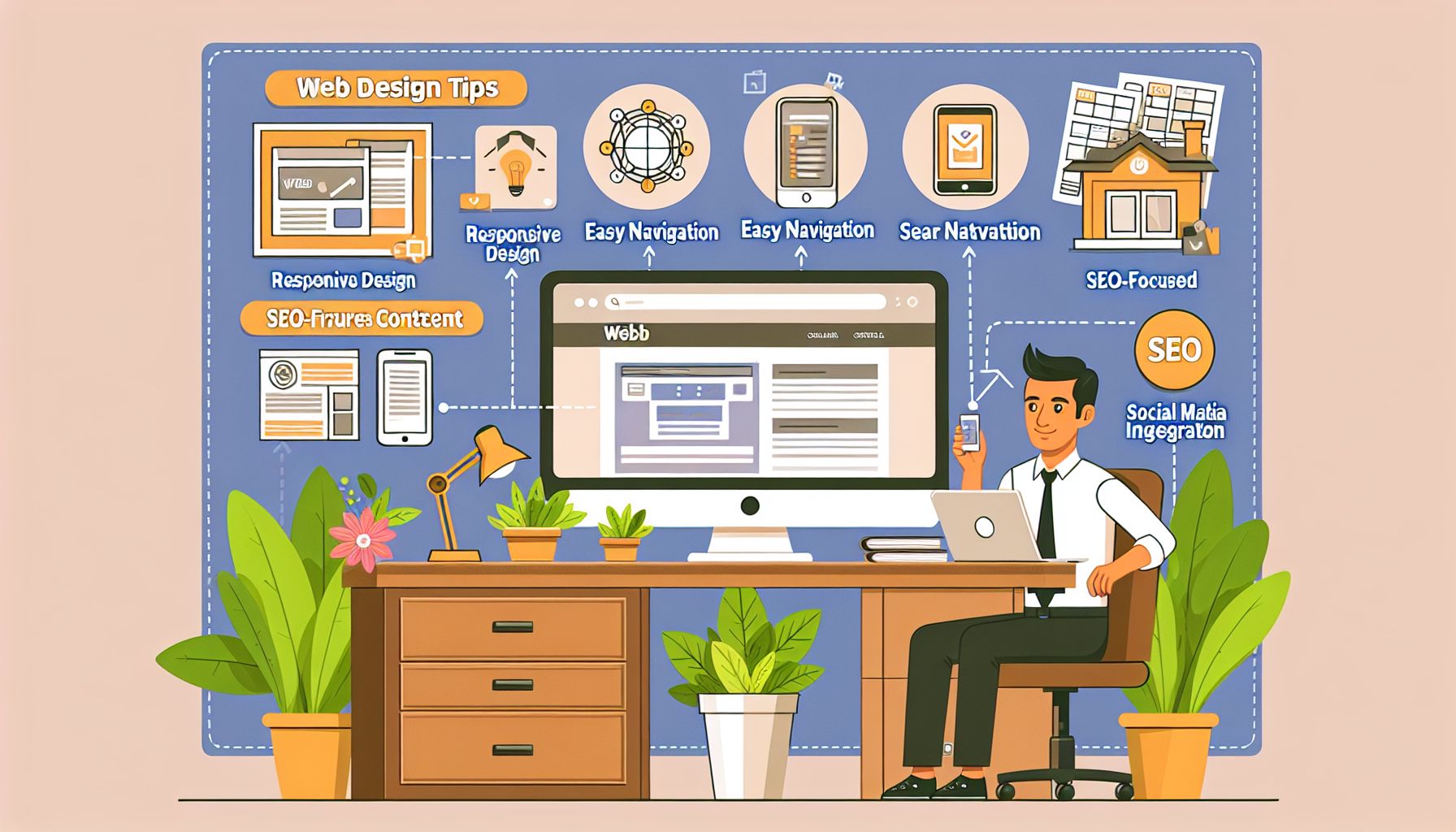

Web Design Tips for Small Business Owners
In today’s digital age, having a strong online presence is essential for small businesses to thrive. One of the key aspects of establishing this presence is designing a website that not only looks visually appealing but also functions seamlessly. A well-designed website can make a significant difference in attracting and retaining customers. So, where do you start if you’re a small business owner looking to enhance your online presence? Here are some valuable web design tips that will help your business make a lasting impression online.
Understand Your Brand Identity
Before diving into the world of web design, it’s crucial to have a clear understanding of your brand identity. Your website should reflect your brand’s values, tone, and overall image. Start by creating a style guide that outlines your brand colors, fonts, and any specific design elements that represent your business. Having this guide will ensure consistency throughout your website and align it with your offline marketing materials.
Keep It Simple and User-Friendly
When it comes to web design, simplicity is key. Avoid cluttering your website with excessive content, images, or flashy effects. Instead, aim for a clean and minimalistic design that is easy for users to navigate. Make sure your website is organized logically, with clear menu options and a user-friendly interface. Remember, visitors should be able to find the information they’re looking for within seconds.
Mobile Responsiveness Is a Must
Since the majority of internet users access websites through their mobile devices, having a responsive design is no longer optional. Ensure that your website is optimized for all screen sizes, from desktops to smartphones and tablets. A responsive design allows your website to adapt to different devices seamlessly, providing visitors with an excellent user experience regardless of how they access your site.
Utilize High-Quality Visuals
When it comes to visuals, quality is vital. Invest in professional photography or use high-resolution images that represent your brand effectively. Avoid using generic stock photos and opt for original visuals that help convey your brand’s story. Additionally, consider incorporating videos or interactive elements to engage and captivate your visitors, encouraging them to spend more time on your website.
Incorporate Clear Calls to Action
A website with a beautiful design is excellent, but it won’t benefit your business if it doesn’t engage visitors and convert them into customers. Include clear and compelling calls to action throughout your website to guide users towards the actions you want them to take. Whether it’s making a purchase, booking a consultation, or signing up for a newsletter, a well-placed call to action can significantly increase your conversion rates.
Optimize for Search Engines
Having a visually appealing website is essential, but it’s equally important to optimize it for search engines. Implementing basic Search Engine Optimization (SEO) techniques can improve your website’s visibility in search engine results, making it easier for potential customers to find you. Conduct keyword research specific to your business, incorporate those keywords naturally into your website’s content, and optimize your meta tags and headings.
Ensure Fast Loading Times
In today’s fast-paced world, users expect websites to load quickly. If your website takes too long to load, visitors are likely to leave and look for alternatives. Optimize your website’s loading times by compressing images, minimizing code, and leveraging browser caching. Regularly check your website’s loading speed using tools like Google PageSpeed Insights to identify areas for improvement.
Monitor and Analyze Your Website’s Performance
Once your website is up and running, your job isn’t over. Continuously monitor and analyze your website’s performance using web analytics tools like Google Analytics. By tracking metrics such as site traffic, bounce rate, and conversion rates, you can identify areas of improvement and make data-driven decisions to enhance your website and overall online strategy.
Conclusion
In today’s digital landscape, a well-designed website is essential for small businesses to succeed. By understanding your brand identity, keeping your design simple and user-friendly, optimizing for mobile devices, and incorporating clear calls to action, you can create a website that stands out from the competition. Don’t forget to optimize your website for search engines, ensure fast loading times, and consistently analyze your website’s performance. Following these web design tips will help your small business establish a strong online presence, attract customers, and achieve your business goals.
Comments are Disabled